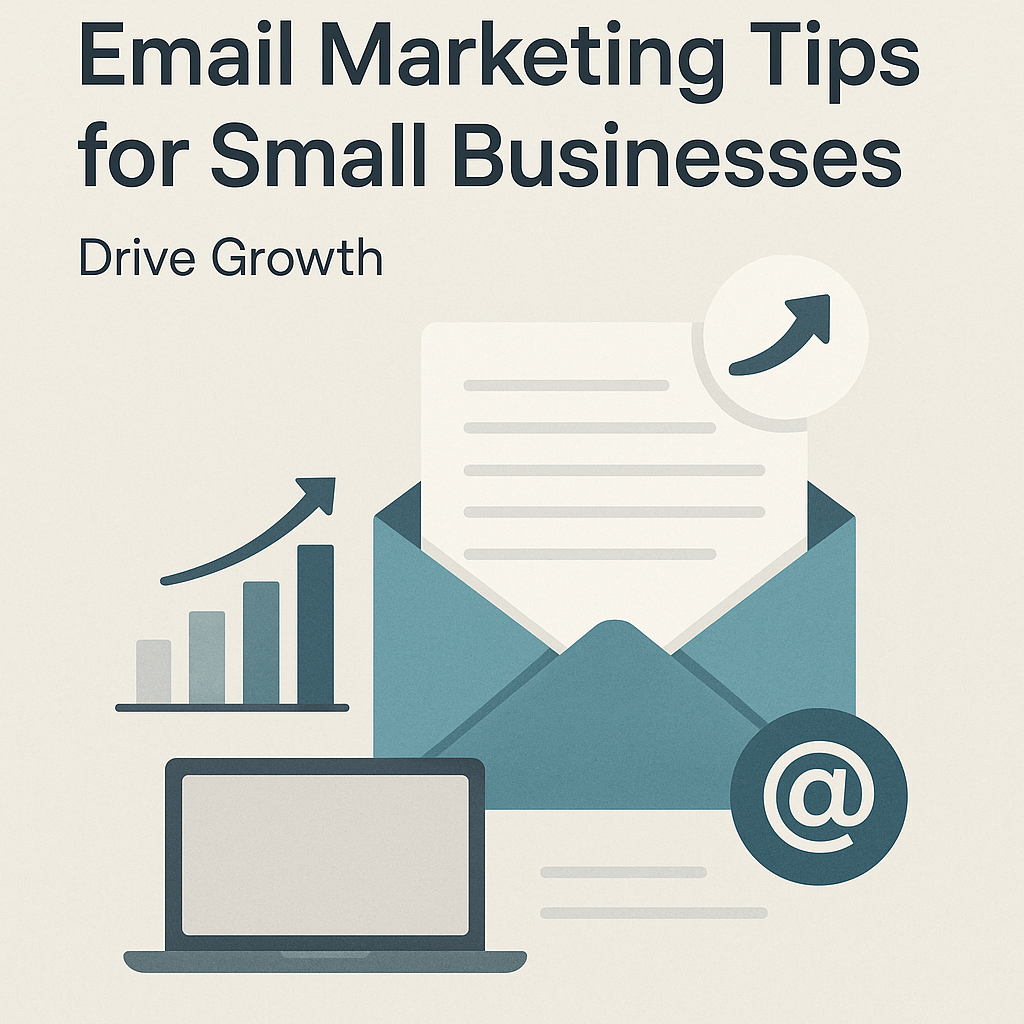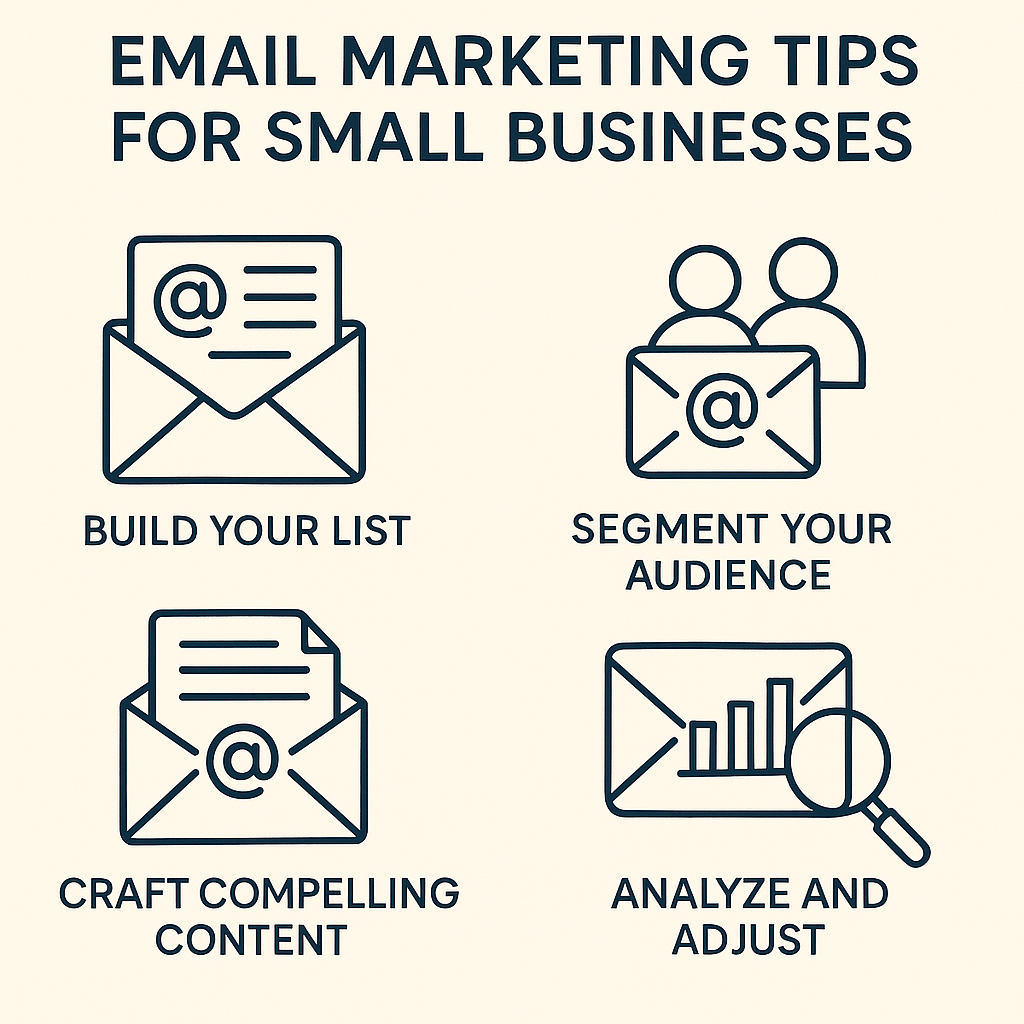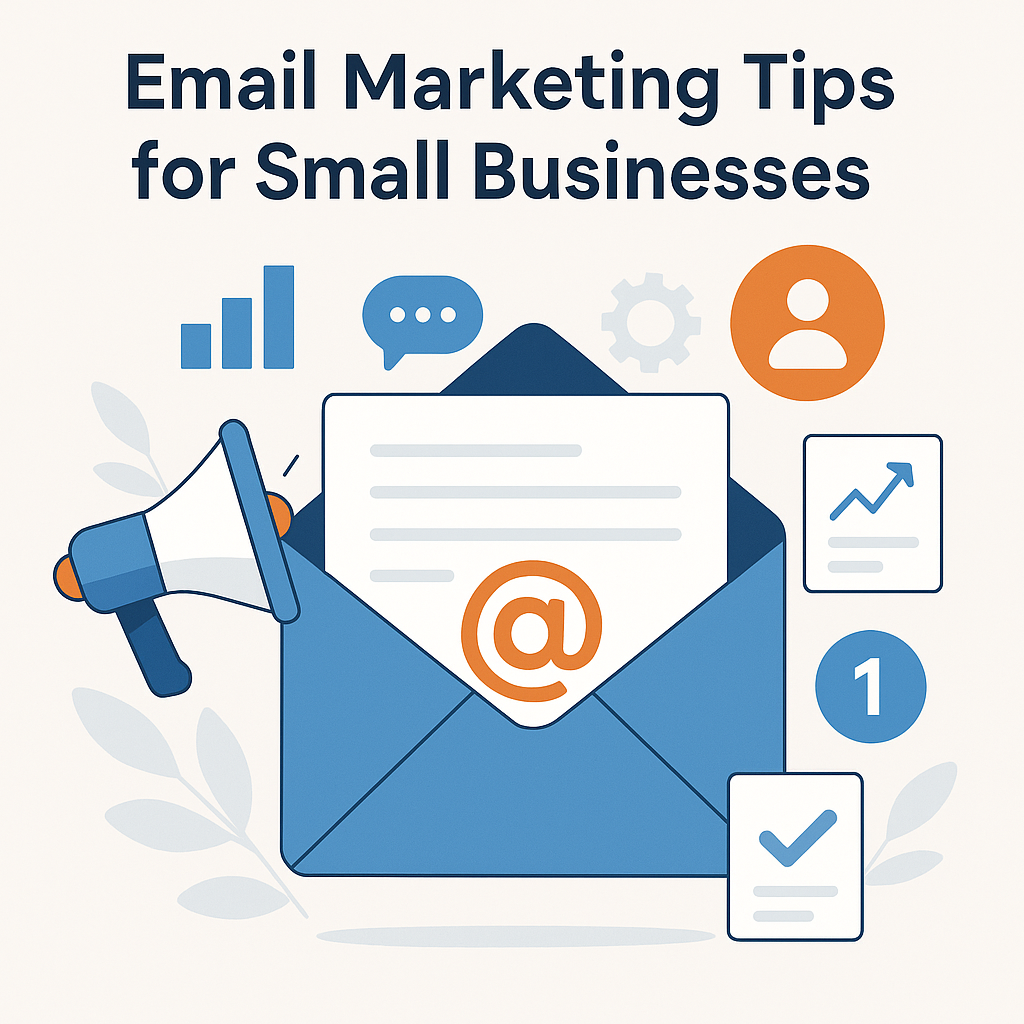Email Marketing Tips for Small Businesses: Drive Growth

In today's fast-paced digital landscape, small businesses are constantly seeking effective ways to connect with their audience, drive sales, and achieve sustainable growth. While social media and other channels capture significant attention, the humble email remains one of the most powerful and cost-effective tools in a marketer's arsenal. For small business owners, juggling a million tasks, mastering email marketing isn't just about sending newsletters; it's about building relationships, nurturing leads, and ultimately, creating the kind of business that supports the lifestyle you desire. This guide dives into practical email marketing tips for small businesses, showing you how to leverage your inbox for greater impact, efficiency, and a better work-life balance.
Boosting Your Bottom Line: How Reply Speed Impacts Customer Acquisition and Retention
In the world of small business, every interaction counts. When a potential customer or an existing client reaches out, their experience with your responsiveness can be a make-or-break moment. This is particularly true in email communication. The speed at which you acknowledge and respond to inquiries directly influences customer acquisition and retention rates.
Consider this: A potential client sends an email asking about your services. If they receive a prompt, helpful reply within a few hours, they feel valued and understood. This speed signals professionalism and efficiency, setting a positive tone for the relationship. Conversely, a delayed or ignored email can lead to frustration, a lost sale, and a negative perception of your brand. Studies consistently show that faster response times lead to higher customer satisfaction and loyalty. For instance, some research suggests that responding to customer queries within the first hour can significantly increase conversion rates.
This principle extends beyond initial inquiries. Quick replies to support requests, order confirmations, or even simple questions demonstrate that you value your customers' time. This not only fosters goodwill but also encourages repeat business and positive word-of-mouth referrals – crucial elements for small business growth strategies.
However, for many small business owners, a packed schedule makes timely email management a significant challenge. This is where focusing on email productivity for entrepreneurs becomes paramount. Implementing efficient systems and tools can ensure you're not missing opportunities due to slow communication.
Crafting Compelling Campaigns: Essential Tips for Small Business Email Marketing Success
Once you've established the importance of responsiveness, the next step is to build effective email campaigns that resonate with your audience and drive desired actions. Crafting compelling emails involves a blend of strategy, creativity, and understanding your customer.
1. Define Your Goals
Before sending a single email, know what you want to achieve. Are you aiming to increase website traffic, promote a new product, gather feedback, or nurture leads? Clearly defined goals will shape your content, calls to action, and overall strategy. As Shopify's guide on email marketing strategy suggests, setting clear goals is the foundational step for any successful campaign.
2. Build a Quality Email List
Your email list is your most valuable asset. Focus on attracting subscribers who are genuinely interested in your business. Offer incentives like discounts, exclusive content, or early access to new products in exchange for email sign-ups. Ensure your sign-up forms are visible on your website and social media profiles. Email Octopus highlights the importance of optimizing sign-up forms and experimenting with different types, such as exit-intent pop-ups, to make it easy for people to register.
3. Craft Irresistible Subject Lines
Your subject line is the gatekeeper to your email content. It needs to be concise, engaging, and relevant enough to make recipients click. Use personalization, create curiosity, highlight benefits, or create a sense of urgency (sparingly). A/B testing different subject lines is key to understanding what works best for your audience.
4. Provide Value in Every Email
Don't just sell; educate, entertain, or inspire. Offer tips, industry insights, behind-the-scenes looks, or helpful resources. When your emails consistently provide value, subscribers are more likely to open them and engage with your brand. Klaviyo suggests a fun, lighthearted tone rather than a pushy, salesy one, and recommending similar products genuinely helps.
5. Clear and Compelling Calls to Action (CTAs)
Every email should guide the reader toward a specific action. Whether it's "Shop Now," "Read More," "Download Your Guide," or "Book a Consultation," your CTA should be prominent, clear, and action-oriented. Use strong verbs and make it easy for users to find and click.
6. Optimize for Mobile
A significant portion of emails are opened on mobile devices. Ensure your emails are mobile-responsive, with clear fonts, appropriately sized images, and easily clickable CTAs. Test your emails on different devices before sending.
7. Maintain a Consistent Sending Schedule
Regularity builds anticipation and keeps your brand top-of-mind. However, avoid overwhelming your subscribers. Find a balance that provides consistent value without leading to fatigue. Whether it's weekly, bi-weekly, or monthly, consistency is key for customer engagement tips.
Audience Segmentation & Personalization: Delivering the Right Message, Every Time
Generic, one-size-fits-all email campaigns rarely yield optimal results. In today's crowded inbox, personalization and segmentation are critical for cutting through the noise and delivering messages that truly connect with your audience. This approach is a cornerstone of effective email marketing tips for small businesses.
Why Segment Your Audience?
Segmentation involves dividing your email list into smaller groups based on shared characteristics. This allows you to tailor your messaging to the specific needs and interests of each group. Common segmentation criteria include:
- Demographics: Age, location, gender.
- Purchase History: First-time buyers, repeat customers, high-value customers, customers who haven't purchased recently.
- Engagement Level: Highly engaged subscribers, those who haven't opened emails in a while.
- Interests: Based on past clicks, preferences indicated during sign-up, or browsing behavior.
The Power of Personalization
Once segmented, you can personalize your emails. This goes beyond simply using a subscriber's first name. It means:
- Content Relevance: Sending product recommendations based on past purchases or browsing history.
- Behavioral Triggers: Automating emails based on specific actions, like a welcome series for new subscribers or a re-engagement campaign for inactive ones.
- Tailored Offers: Providing discounts or promotions relevant to a specific segment's interests or loyalty level.
Personalized emails tend to have higher open rates, click-through rates, and conversion rates. They make your subscribers feel understood and valued, fostering stronger relationships and encouraging them to boost sales with email.
For example, imagine a small online bookstore. They can segment their list into "Mystery Lovers," "Sci-Fi Fans," and "Young Adult Readers." When a new mystery novel is released, only the "Mystery Lovers" segment receives an email highlighting it, perhaps with a special pre-order discount. This targeted approach is far more effective than sending the same announcement to everyone.
Automation & AI: Streamlining Your Email Marketing for Maximum Efficiency
For small business owners, time is a precious commodity. The good news is that technology, particularly email marketing automation and Artificial Intelligence (AI), can dramatically streamline your efforts, boost productivity, and ensure consistent engagement without requiring constant manual intervention.
Leveraging Email Marketing Automation
Automation allows you to set up pre-written email sequences that are triggered by specific customer actions or dates. Common automation workflows include:
- Welcome Series: Automatically send a series of emails to new subscribers to introduce your brand, share valuable content, and guide them toward their first purchase. This is a core part of email lead nurturing.
- Abandoned Cart Reminders: For e-commerce businesses, send automated emails to customers who have left items in their cart, reminding them and perhaps offering a small incentive to complete the purchase.
- Post-Purchase Follow-ups: Send thank-you emails, request reviews, or offer related product suggestions after a customer makes a purchase.
- Re-engagement Campaigns: Target inactive subscribers with special offers or compelling content to bring them back into the fold.
These automated workflows ensure that crucial touchpoints are never missed, providing a seamless customer experience and consistently driving engagement and sales.
The Role of AI in Email Productivity
AI is revolutionizing how we manage our inboxes and craft communications. For busy entrepreneurs, the constant influx of emails can be overwhelming. Tools like an ai executive assistant can help streamline your workflow by automating responses, prioritizing messages, and even drafting replies, freeing up valuable time for strategic tasks. This isn't just about efficiency; it's about reclaiming your day.
AI can assist with various aspects of email marketing:
- AI-Powered Subject Line Generation: Tools can suggest subject lines that are optimized for open rates based on vast datasets.
- Content Creation: AI can help draft email copy, product descriptions, or social media posts, saving significant writing time. Explore resources like an AI email generator to speed up content creation.
- Smart Triage and Prioritization: AI can help sort and prioritize your inbox, ensuring urgent messages are addressed promptly. This ties into the broader concept of mastering your inbox, as discussed in articles on AI workflow and using an AI assistant app.
- Personalization at Scale: AI algorithms can analyze customer data to deliver hyper-personalized content to individual subscribers, far beyond what manual segmentation can achieve.
By integrating these tools, small businesses can achieve a level of efficiency that was previously only accessible to larger corporations. This focus on email productivity for entrepreneurs is key to achieving growth without burnout.
Humanizing Your Brand: Connecting with Customers Through Authentic Email Stories
In the digital age, where interactions can often feel impersonal, humanizing your brand through email is more important than ever. For small businesses, this is a distinct advantage. Your authenticity, passion, and personal touch are what set you apart from larger, more corporate entities. Email provides a direct channel to build these genuine connections.
Tell Your Story
Share the journey of your business. What inspired you to start? What challenges have you overcome? What are your core values? Sharing these narratives in your emails makes your brand relatable and memorable. Customers connect with people, not just products or services.
Consider the story of Maria, a small bakery owner. Instead of just sending out promotions for her cupcakes, she began sharing weekly emails that included:
- A "Baker's Note" about her inspiration for the week's featured flavor.
- A behind-the-scenes look at her team creating a special cake.
- Tips for pairing her pastries with coffee or tea.
- A story about a customer who shared a special moment with her baked goods.
These emails fostered a sense of community and loyalty. Customers felt like they were part of Maria's journey, not just consumers. This approach to customer engagement tips helps build trust and emotional connection.
Authentic Voice and Tone
Let your brand's personality shine through. Are you witty and playful, or more serious and informative? Ensure your email copy reflects this voice consistently. Avoid overly corporate jargon or stiff language. Write as you would speak to a valued customer in person.
Empathy and Understanding
Show that you understand your customers' needs and challenges. Address their pain points and offer solutions through your products or services. When a customer feels understood, they are more likely to remain loyal and advocate for your brand.
Interactive Elements
As mentioned in our guide on interactive email campaigns, incorporating elements like polls, quizzes, or clickable images can boost engagement and make your emails more dynamic and personal. These elements encourage active participation, making the recipient feel more involved with your brand.
By focusing on authentic storytelling and a human-centric approach, you transform your email marketing from a sales channel into a relationship-building tool, which is a powerful driver for small business growth strategies.
Measuring Success: Key Metrics for Your Small Business Email Campaigns
To truly excel with email marketing tips for small businesses, you must track and analyze your campaign performance. Measuring key metrics allows you to understand what's working, what's not, and where to focus your optimization efforts. This data-driven approach is crucial for continuous improvement and maximizing your return on investment.
Essential Email Marketing Metrics to Track:
- Open Rate: The percentage of recipients who opened your email. This indicates the effectiveness of your subject lines and sender name. A low open rate might suggest your subject lines aren't compelling enough.
- Click-Through Rate (CTR): The percentage of recipients who clicked on at least one link within your email. This measures how engaging your email content and calls to action are. A low CTR might mean your CTAs aren't clear or the content isn't relevant enough.
- Conversion Rate: The percentage of recipients who completed a desired action (e.g., made a purchase, downloaded a resource, signed up for a webinar) after clicking a link in your email. This is the ultimate measure of your campaign's success in achieving its goals.
- Bounce Rate: The percentage of emails that couldn't be delivered. High bounce rates (especially hard bounces) can indicate issues with your email list hygiene and can negatively impact your sender reputation.
- Unsubscribe Rate: The percentage of recipients who opt-out of your email list. While some unsubscribes are natural, a high rate can signal content irrelevance, too frequent sending, or poor list quality.
- List Growth Rate: The rate at which your email list is growing. A healthy list growth ensures you're continually reaching new potential customers.
Using Metrics for Email Campaign Optimization
Regularly reviewing these metrics provides actionable insights:
- A/B Test Everything: Use your metrics to inform A/B tests on subject lines, CTAs, email copy, and send times. For instance, if your open rates are low, test different subject line styles. If your CTR is low, test different CTA button designs or placements.
- Segment Performance: Analyze how different segments perform. This can reveal which groups are most engaged and which might require a different approach.
- Identify Trends: Spot patterns over time to understand what types of campaigns or content resonate most with your audience.
- Clean Your List: Monitor bounce rates and inactive subscribers. Regularly cleaning your list by removing unengaged subscribers can improve deliverability and reduce costs. Tools like an email inbox cleaner can assist with this process.
By diligently tracking and analyzing these metrics, you can continuously refine your email campaign optimization efforts, ensuring your email marketing is as effective as possible in driving small business growth strategies.
Conclusion: Achieving Lifestyle Shifts with Smart Email Marketing and Productivity
For small business owners, the journey from day-to-day operations to strategic growth often hinges on efficiency and smart resource allocation. Email marketing, when executed effectively, is a powerful engine for both. By implementing the email marketing tips for small businesses discussed – from ensuring rapid reply speeds and crafting compelling campaigns to leveraging segmentation, personalization, and automation – you can significantly enhance your customer engagement and drive sales.
The strategic use of tools, including those powered by AI, plays a pivotal role in this transformation. As we've seen, tools like an ai executive assistant can manage email communications, prioritize tasks, and automate repetitive processes, freeing up invaluable time. This reclaimed time is not just about clearing your inbox; it’s about creating space for innovation, strategic planning, and, crucially, a better work-life balance. It's about achieving the lifestyle shifts that inspired you to start your business in the first place.
Imagine spending less time bogged down by email management and more time developing new products, connecting with your community, or simply enjoying your life outside of work. This is the promise of efficient email marketing combined with smart technology. It’s about working smarter, not just harder, to build a thriving business that supports your personal well-being.
Start by identifying one or two strategies from this guide that you can implement this week. Focus on building your list, improving your subject lines, or setting up a simple welcome automation. With consistent effort and a focus on providing value, your email marketing will become one of your most significant assets, paving the way for both business growth and a more fulfilling entrepreneurial lifestyle.
```


